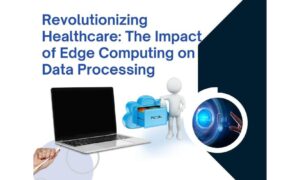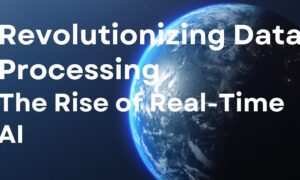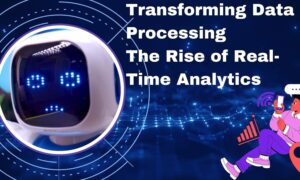Welcome to the exciting world of fog computing! As technology advances at an unprecedented pace, traditional cloud computing alone is no longer sufficient to meet our ever-growing demand for real-time data processing and instant response. That’s where fog computing steps in, revolutionizing the way we connect and interact with the digital landscape. In this blog post, we will delve into the three fundamental layers of fog computing, unraveling its mysteries and exploring its potential to reshape industries across the globe. So fasten your seatbelts as we embark on a journey to understand the essence of fog computing and how it can transform our digital experiences like never before!
Introduction to Fog Computing
Fog computing is a term coined by Cisco Systems in 2012 to describe the extension of cloud computing services and applications closer to the end user. It does this by bringing computation, storage, and networking resources closer to the user edge, which can be at home, at a mobile base station, or even at an industrial control center.
Fog computing is sometimes also called “edge computing”, “fog networking”, or simply “fogging”. It is an evolution of existing network architectures and services that moves some elements of those services closer to the end user. The goal of fog computing is to improve efficiency, performance, and security while reducing bandwidth requirements and latency.
The key characteristic of fog computing is its ability to process data where it is generated instead of having to send it back to centralized locations for processing. This can be done using various types of devices, including sensors, switches, routers, gateways, access points, and more. The data processed can be text, image, video, or any other type that can be digitized.
There are three fundamental layers to fog computing: devices, connectivity, and applications. Each layer has different components that work together to provide the desired service or application.
Devices: These are the physical devices that generate or collect data. They can be anything from sensors to routers to smartphones.
Connectivity: This layer provides the means for data to be transported between devices. It includes both wired and wireless technologies such as Wi-Fi, Ethernet, and cellular networks.
Applications: The final layer provides the actual application or service that is being delivered. It can range from simple data logging to real-time analytics.
What are the three layers of fog computing?
Fog computing is a term used to describe a decentralized computing infrastructure in which data, compute, storage, and applications are distributed in the most logical place, closer to the source of the data. In a fog computing environment, data and applications are processed at or near the edge of the network instead of in a centralized data center. By processing data closer to where it is created or collected, fog computing can improve latency and reduce bandwidth costs.
There are three layers to fog computing: devices, gateways, and application servers.
Devices: These are the endpoints in a fog computing environment; they can be anything from sensors and actuators to embedded systems and wearables. Data is generated at the edge by these devices and then sent to gateways for further processing.
Gateways: Gateways act as a control point and intermediary between devices and application servers. They collect data from devices, perform initial processing on that data (filtering, aggregating, etc.), and then send it on to application servers. Gateways can also provide device management capabilities, such as firmware updates and security monitoring.
Application Servers: Application servers are responsible for running applications that make use of the data collected by devices in the fog computing environment. These applications could be anything from analytics engines to video streaming services. In some cases, application servers may also host user interfaces that allow humans to interact with the system (e.g., via a web portal).
Edge Layer
The edge layer is the last mile of the fog computing network and is responsible for data processing at the very edge of the network. It is often referred to as the “last mile” because it is the farthest from the centralized data center and closest to the end user. The edge layer consists of devices that collect and process data locally before sending it to the cloud or other central location. These devices are typically low-power and have limited storage and processing capabilities.
Network Layer
Fog computing is a term for distributed computing that brings computation and data storage closer to the network edge. It helps reduce latency, bandwidth, and power consumption while also providing greater security and privacy. The three fundamental layers of fog computing are the control layer, the data layer, and the application layer.
The control layer is responsible for managing fog resources and providing APIs for developers. The data layer handles data storage and processing. And the application layer runs applications built on top of the fog platform.
Each of these layers can be further divided into sub-layers. For example, the data layer can be divided into a streaming data layer and a batch data layer. The application layer can be divided into an orchestration layer and a runtime environment layer.
In general, fog computing is designed to make better use of resources by moving computation and storage closer to the network edge. By doing so, it can help reduce latency, bandwidth, and power consumption while also providing greater security and privacy.
Cloud Layer
The cloud layer is the topmost layer of the fog computing architecture. It consists of a set of distributed nodes that are interconnected via a high-speed network. These nodes provide the processing, storage, and networking resources needed to support the applications and services that run in the cloud layer. The cloud layer is responsible for managing the overall fog computing environment and providing the interface between the fog computing infrastructure and the end user.
Potential Challenges with Fog Computing
Fog computing is a term that is used to describe the edge of a network, where data is processed. The name fog computing comes from the fact that this layer is often made up of devices that are not always connected to the internet, such as weather sensors or security cameras. While fog computing has many potential benefits, there are also some potential challenges that need to be considered.
One challenge with fog computing is ensuring that data is secure. When data is stored and processed at the edge of a network, it can be more difficult to protect. Another challenge is managing and coordinating all of the devices that are part of a fog computing system. This can be complex and time-consuming, especially if there are a large number of devices.
It is important to consider the cost of implementing a fog computing system. While the upfront cost may be higher than traditional cloud-based solutions, the long-term costs associated with managing and maintaining a fog computing system can be significantly lower.
Common Applications for Fog Computing
Fog computing is often used in conjunction with the Internet of Things (IoT), as it can provide the low-latency, high-bandwidth connections that are required for many IoT applications. Common applications for fog computing include:
Smart Cities: Fog Computing can be used to connect various sensors and devices in a city and then aggregate and analyze the data to help optimize city operations.
Industrial Control Systems: By connecting industrial control systems to the cloud, fog computing can provide real-time monitoring and control of industrial processes.
Connected Cars: Automotive applications of fog computing include everything from infotainment systems to autonomous driving. By processing data locally, fog computing can help reduce latency and improve safety.
Edge Computing: As more and more data is generated at the edge of networks, fog computing can help distribute that data and enable real-time analysis.
Conclusion
Fog computing is an important and revolutionary technology that can help organizations manage their data more effectively. Understanding the three fundamental layers of fog computing will equip you with the necessary knowledge to leverage its benefits for your own organization. With the right implementation strategy, fog computing can give businesses a competitive edge in terms of data management, analytics, and cost savings. So what are you waiting for? Take advantage of this powerful technology today!



































